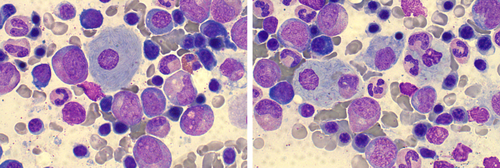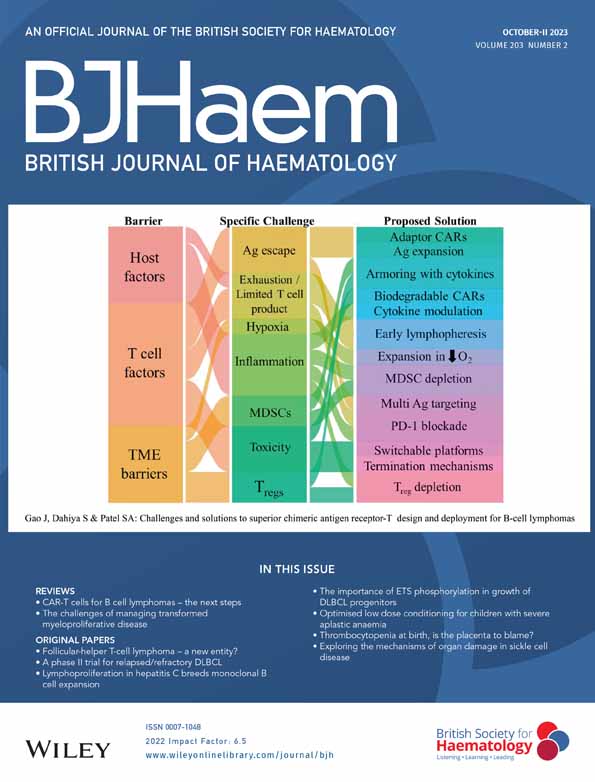Bone marrow pseudo-Gaucher cells demonstrating haemophagocytosis associated with extranodal NK/T cell lymphoma, nasal type
A 30 year old female presented with a 4 month history of an enlarging right posterior thigh mass. Biopsy of the lesion demonstrated an angioinvasive atypical lymphoid infiltrate with pleomorphic nuclei and prominent nucleoli. The immunohistochemical profile was consistent with a diagnosis of extranodal NK/T cell lymphoma: atypical lymphoid cells were positive for CD2, CD3, CD7, CD45RO, CD30, CD8 and cytotoxic molecules (Granzyme B, TIA1, Perforin). CD5 was lost in most cells. CD56 was expressed with weak intensity. TCR-beta was positive in a significant subset of the infiltrate. Ki-67% proliferation index was almost 100%. FDG-PET demonstrated FDG avid lymphadenopathy with extranodal involvement at the site of the leg lesion and in the left nasal cavity. Nasal biopsies demonstrated disease involvement, confirming a diagnosis of extranodal NK/T cell lymphoma, nasal type.
ACKNOWLEDGEMENTS
Open access publishing facilitated by The University of Sydney, as part of the Wiley - The University of Sydney agreement via the Council of Australian University Librarians.





